Have all your ingredients prepared as instructed in the recipe and ready to go.
I like to use wild Rock Shrimp. It is available year round, has a firmer texture and a sweeter taste. When in season, I buy Argentinian Red Shimp from Trader Joe’s. They are sold frozen so I grab a few bags at a time because they tend to disappear real fast. When it is time to go all out, Crawfish Tails it is – the perfect substitute.
Prepare stuffing. Sauté onion and garlic until translucent, add shrimp and lemon rind and stir-fry until rosy pink. Toss in roasted bell peppers, pine nuts and season with salt and pepper. Set aside to cool completely or refrigerate until ready to use.
Although the recipe calls for Atlantic Salmon, you can most certainly use Sockeye Salmon which has a deep red flesh and a stronger flavor. Make sure that you are buying wild salmon and not farmed salmon.
Prepare kibbeh shell. Once chilled thoroughly divide into sixteen balls.
Form kibbeh. Have ready a bowl of iced water; to wet hands when working. Working with one ball at a time, make an indentation on one side using your index finger and start to form a thin hollow shell. Fill with about a teaspoon of filling, pinch edges together to seal and shape and smooth surface as needed.
When you are ready to cook the kibbeh, heat the oil in a skillet and shallow-fry the kibbeh in batches; turning them to ensure that they’re a deep golden brown all over. Alternatively, place kibbeh onto a greased pan and bake in a pre-heated 375 F oven for 20-to-35 minutes. Serve them piping hot.
SALMON KIBBEH WITH GROUND SHRIMP, PINE NUTS AND STEWED PEPPERS
print this recipe
filling:
2 1/2 tablespoons olive oil
1 small purple onion, finely sliced
1 clove garlic, finely diced
1/2 cup (100g) chopped fresh shrimp meat
grated rind of half a lemon
2 red bell peppers, roasted, peeled and thinly sliced
1/3 cup (60g) fried pine nuts
1/2 teaspoon salt
1/4 teaspoon black pepper
kibbeh shell:
3/4 cup (200g) fine white bulgur or cracked wheat
10 oz (300g) fresh Atlantic salmon, finely ground and chilled
2 purple shallots, finely chopped
1 very small red bird’s-eye chili, deseeded and finely chopped
1/2 teaspoon ground allspice
Freshly ground white pepper
1 teaspoon sea salt
1 tablespoon extra-virgin olive oil
olive oil for shallow-frying
To make the filling, heat the oil in a large heavy-based skillet. Sauté the onion and garlic for about five minutes until they soften but do not color. Add the shrimp and lemon rind and fry until it colors a rosy pink; using a wooden spoon to break it up thoroughly. Add the peppers and pine nuts, and season with salt and pepper. Stir to mix everything together. Remove from the heat and leave to cool.
To prepare the kibbeh shell, begin by soaking the bulgur or cracked wheat in plenty of cold salted water for about 10 minutes. Now, using your hands, squeeze out as much water as you can, then top into a dish towel and twist to extract even more.
Put the bulgur or cracked wheat into a mixing bowl with the salmon, shallots, chili, seasonings and extra-virgin olive oil and mix everything together. Put the mixture through a mincer, then refrigerate until chilled.
To make the kibbeh, put a small lump of the shell mixture in the palm of your left hand and roll it into a smooth oval shaped ball. Using the forefinger of your right hand, make an indentation in the ball and start to shape it into a hollow shell. Try to make it as thin and even as you can. Fill the shell with about a teaspoon of the filling, wet the edges of the opening with cold water and pinch it closed. You are aiming for a small torpedo-shaped croquette, with slightly tapered ends; makes 14-to-16 pieces. Leave the stuffed kibbeh on a tray in the refrigerator, covered, until you are ready to cook them.
When you are ready to cook the kibbeh, heat the oil in a skillet and shallow-fry the kibbeh in batches, turning them to ensure that they’re a deep golden brown all over. Drain them on paper towels and serve them piping hot.
* recipe from Saha: A chef’s Journey Through Lebanon and Syria, by Greg Malouf, Lucy Malouf, Matt Harvey



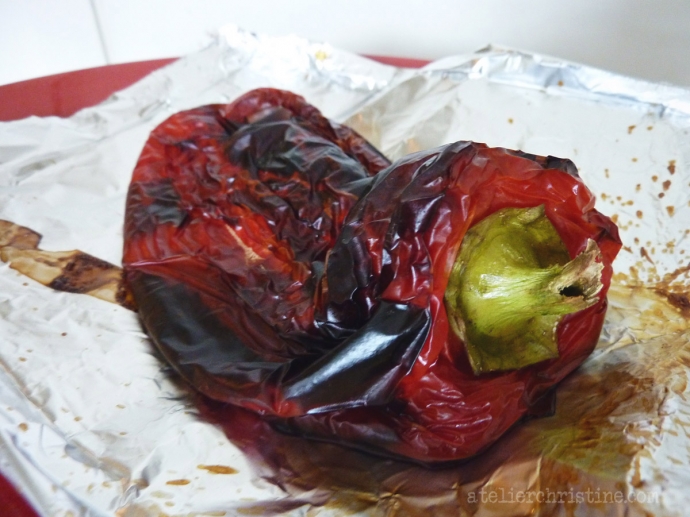
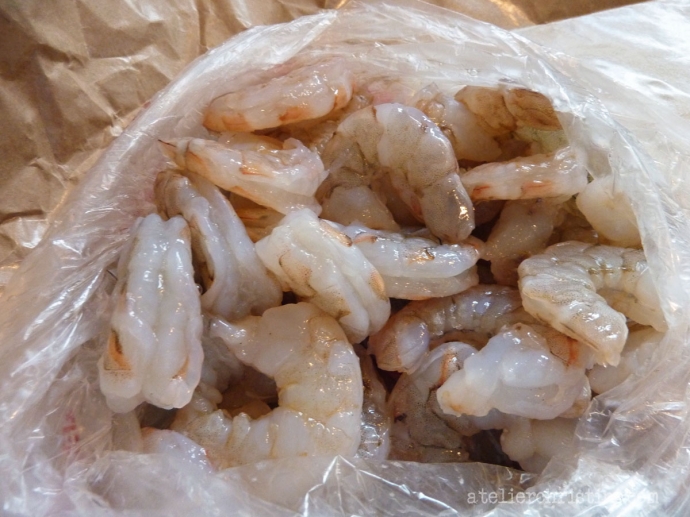

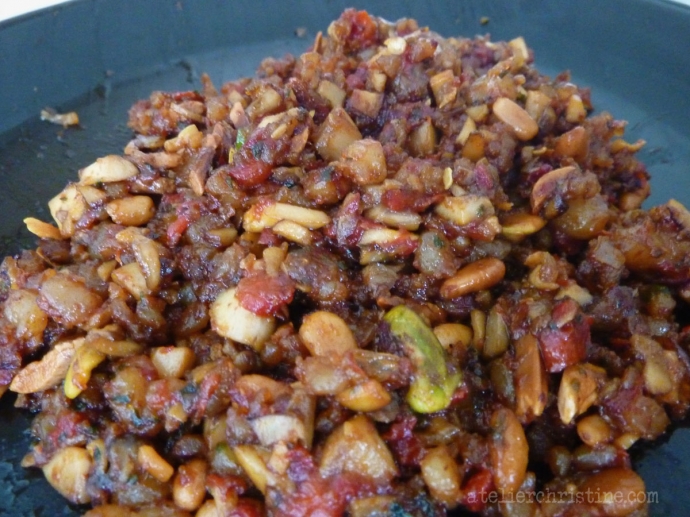
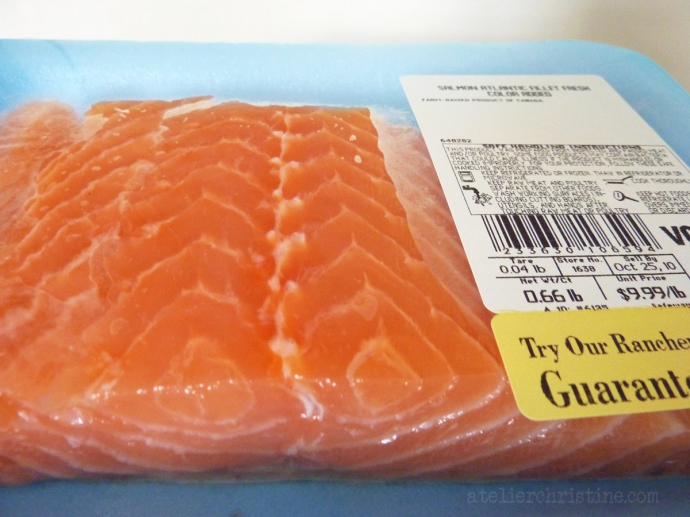


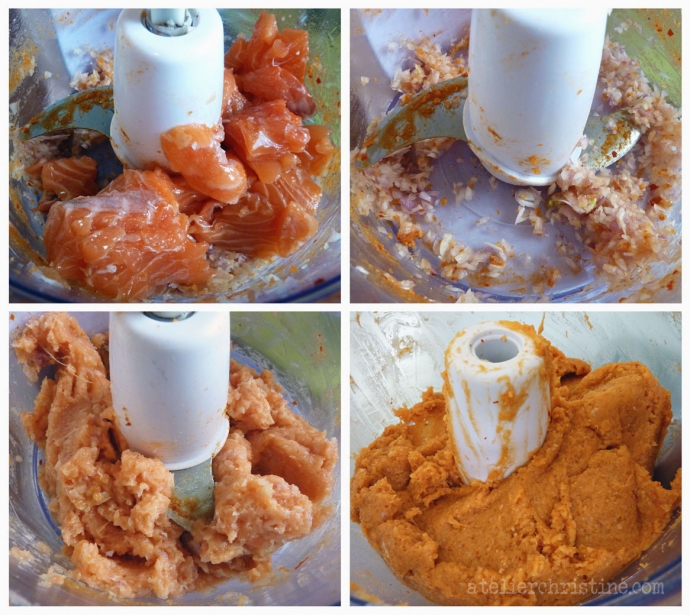


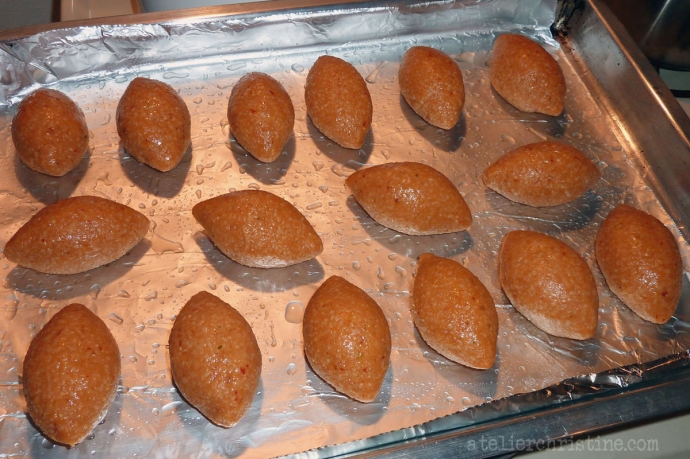






Recent Comments